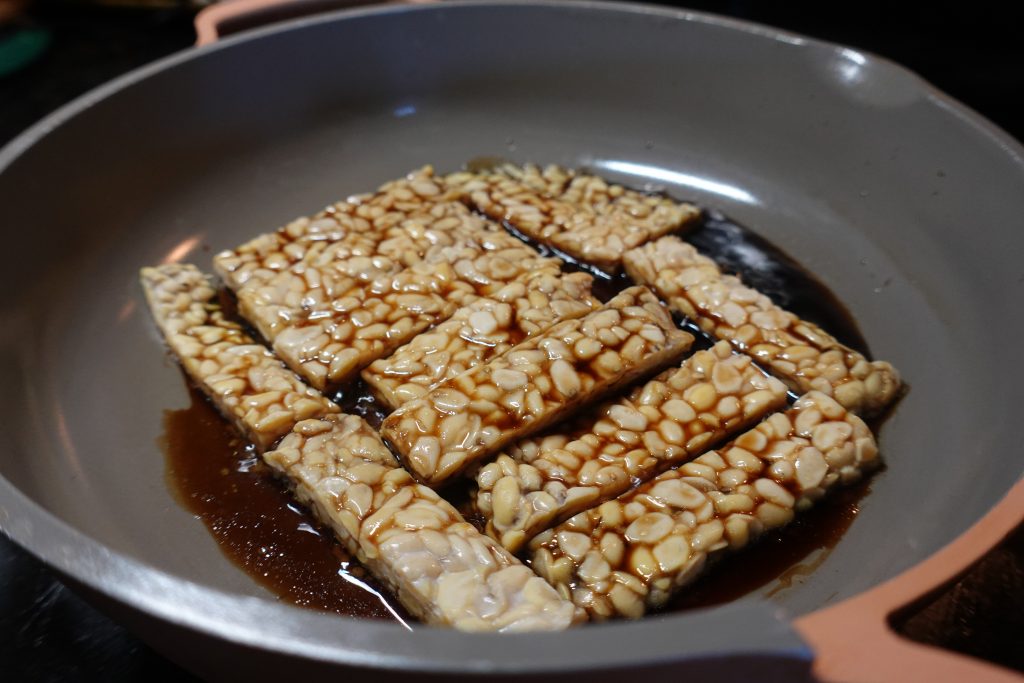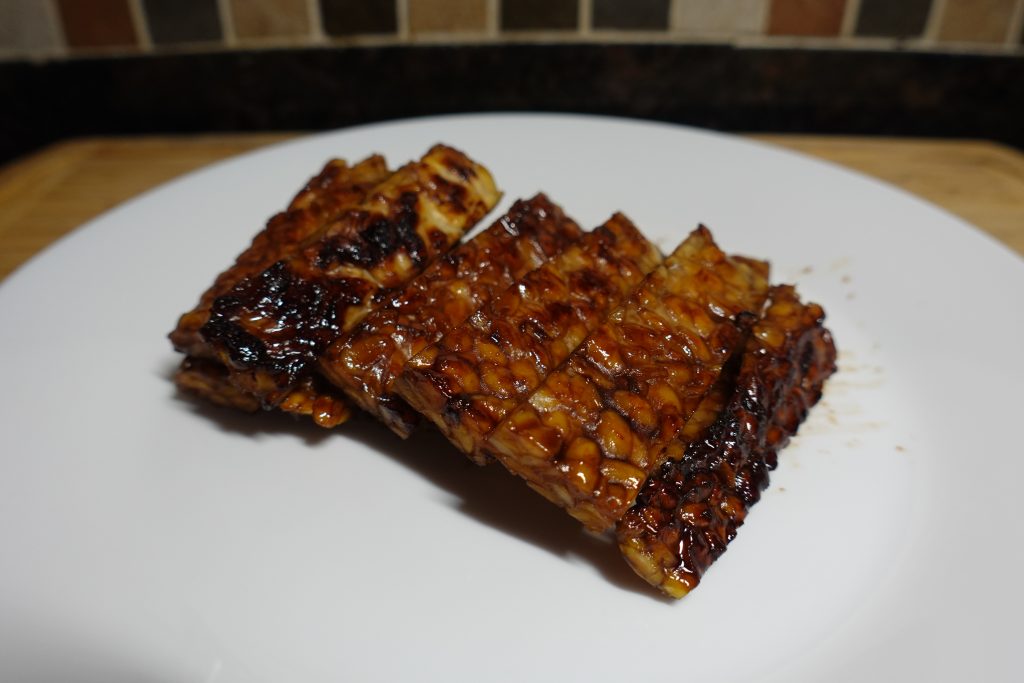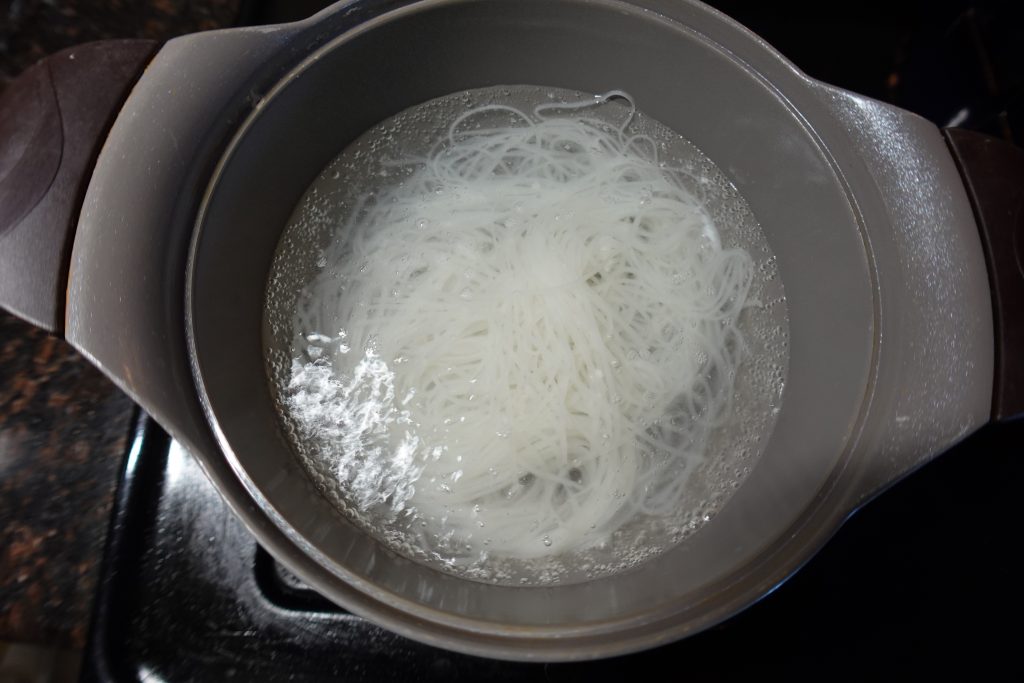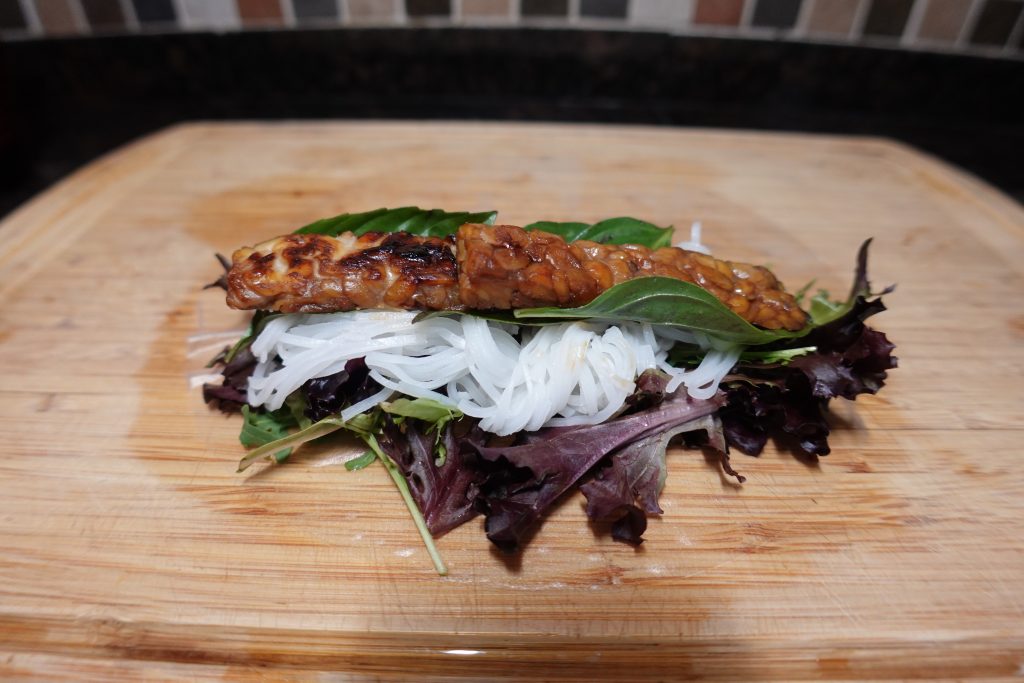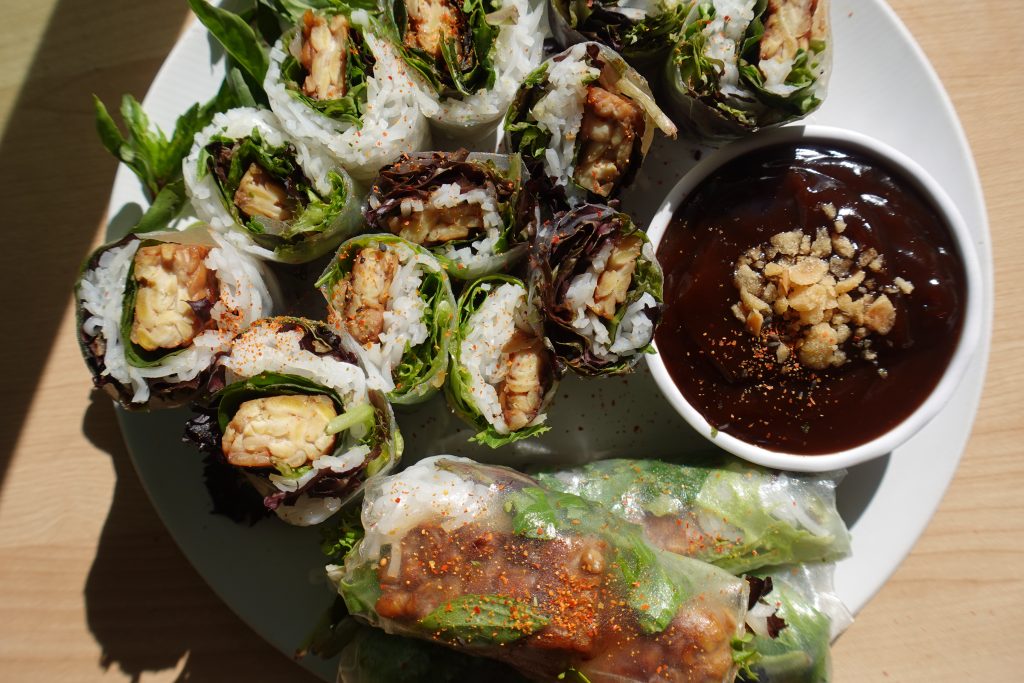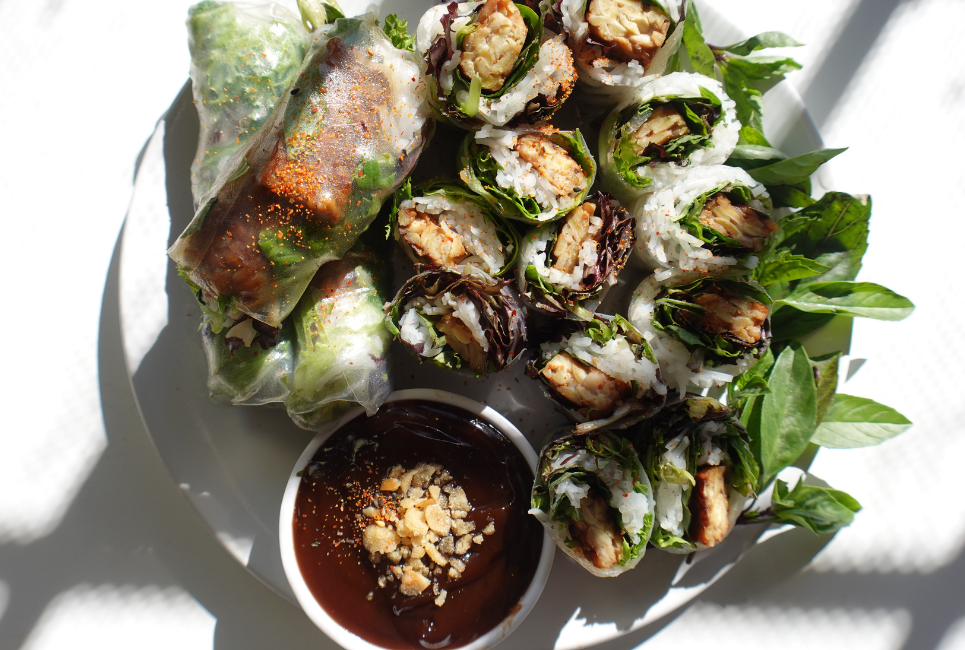
These tempeh spring rolls are fresh and easy to make! We first start off by marinating the tempeh in a sweet, salty, and nutty combination. To give the roll more texture, we keep Vietnamese tradition by including rice noodles and a ton of fresh vegetables.
Tempeh is a healthy, high in fiber, and probiotic option compared to shrimp or pork, which is what is commonly used for spring rolls.
This recipe works because the rice paper used to wrap the tempeh carries flavor and texture, which makes it a fun way to enjoy tempeh on those warm and sunny days.
What is Tempeh?
With all the meat alternatives ranging from Beyond Beef to Impossible burgers, one can’t forget about this original superfood that has been created way before these meatless options gained popularity. However, Tempeh will remain a classic because it is a fermented plant-based protein that is rich in history.
Just like how yogurt is fermented with bacteria, the same goes for Tempeh. The tempeh is fermented by growing a white and pale layer of mycelium around the soybeans, then forming into a grain cake-like substance.
It is easy to compare tempeh to tofu, however, it is clear that tempeh is less processed because you can see the soybeans pressed and stuck together due to the fermentation.
Why Does Tempeh Works in Spring Rolls?
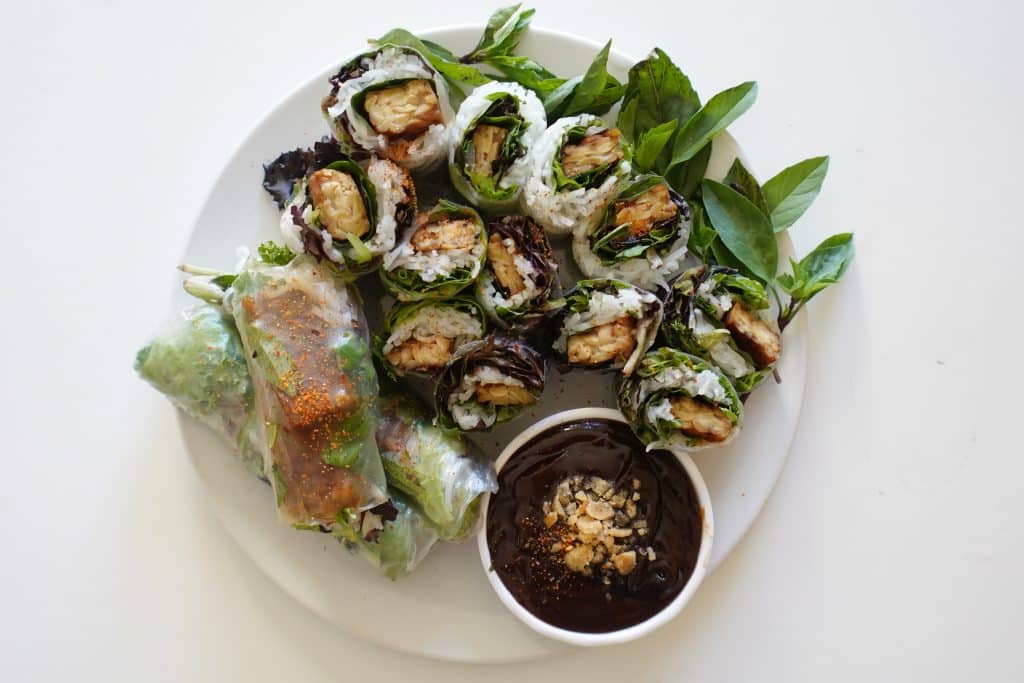
Tempeh works within this spring roll recipe because it acts as a healthy meat alternative. While spring rolls are traditionally wrapped with shrimp or pork, the marinated tempeh makes it a great alternative due to the meaty cake-like texture.
Instead of marinating pork belly or shrimp, marinating tempeh is a far better option because it contains beans and grains that have plenty of fiber and nutrients. Since tempeh is fermented, this makes the roll far more digestible.
How to Cook with Tempeh
There are fermented foods you can eat raw, but this is not the case with tempeh as it is not safe. It must be cooked, and you can do this in any way: sauté, pan-fry, or bake.
Since tempeh is fermented when it cooks it actually deactivates the culture. And while it may not be considered probiotic at this point, tempeh still contains a good deal of fiber to improve gut health by feeding good bacteria in your system.
For this recipe, I actually pan-fried the tempeh along with the marinade on medium-low heat so that tempeh absorbs the sauce over time- much like you would cook actual meat.

How to Turn the Tempeh into Fresh Spring Rolls
Making spring rolls is such an easy and fun process. It’s the best fresh appetizer and even great as a crowd pleaser! For this recipe, I used simple ingredients that can act as the base for your spring roll.
The marinated tempeh on its own is already delicious, and just pairing it with the lettuce, rice noodles, fresh mint, and especially that sweet and salty sauce- just really rounds the dish together as a whole.
A definite fun approach to a tasty fermented meal!
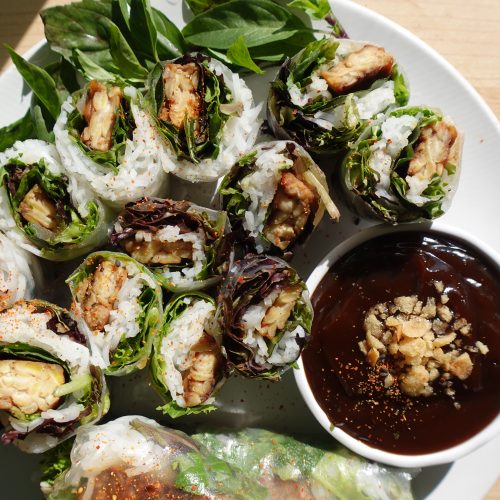
Tempeh Spring Rolls
Ingredients
- 1 Block of Tempeh (store-bought or make your own)
- 2 tbsp Soy sauce or coconut aminos
- 2 tbsp Honey
- 1/2 tbsp Sesame oil
- 2 Oz. Vietnamese rice noodles
- 12 Large round rice paper sheets
- 1 bunch of Thai basil leaves/mint
- Mixed greens of your choice, washed
Dipping Sauce
- 1/4 cup Hoisin sauce
- 1 tbsp Coconut cream
- 1 tbsp Sriracha
- 1 tbsp Water
- Roasted peanuts or nuts to garnish
Instructions
- Start by slicing the tempeh into thin strips. Turn each strip onto its side and slice in half, so that the pieces aren’t too thick. In a separate bowl, mix the soy sauce, honey, and sesame oil together. This will be your marinade for the tempeh. In a separate pan, pour the marinade into the tempeh and leave to marinate on medium-low heat for at least 15 minutes. Cook on both sides until you reach a sticky and cooked consistency. Set aside to cool.
- Cook the noodles according to the packet instructions, then drain and run under cold water until cool. Set aside.
- Fill a large bowl with cold water. Lay the rice paper sheets, tempeh, cooked noodles, herbs, and lettuce right in front of you.
- Dip one rice paper sheet in the bowl of water, turn it over, and make sure that the sheet is completely wet before shaking off any excess water. Lay the rice paper sheet flat on a clean workbench. Starting with the noodles, place a small quantity of each of the filling ingredients in the middle of the rice paper. Starting with the side nearest to you, carefully lift the rice paper over the filling, then roll it away from you to create a tight rice paper roll. Cut the rice paper rolls in half, if desired.
- Place the hoisin sauce, coconut cream, and sriracha, in a small saucepan over low heat and warm, stirring the ingredients to combine. Remove from the heat and divide the sauce among the dipping bowls. Sprinkle the peanuts over the top and serve with the rice paper rolls.
- This is just a base recipe for the tempeh spring rolls, but you can definitely go all out! You can also include julienne cucumbers, pickled carrots and radish, green onion, fresh garlic and ginger, and even kimchi! The possibilities are endless.
Helpful Tips
- Don’t make the roll too big! It will be difficult to roll and close by the end of the wrap.
- Don’t soak the rice paper in the water for too long, all it needs is one second to wet. Once you wet both sides, be sure to transfer and flatten to a board immediately. If it is too wet or if you wait too long, the rice paper will be hard to work with as it becomes very sticky.
- Tempeh can be made up to 2 days in advance, but it’s best to eat and serve the spring rolls while the veggies are fresh.
- It may seem difficult at first to wrap, but do not worry! You will get better with time since there are 10-12 sheets in total!
Notes

